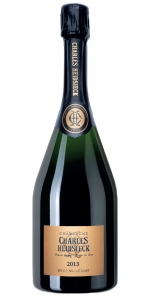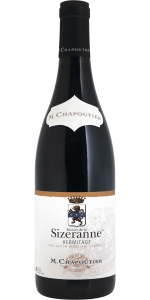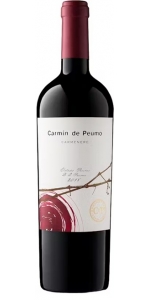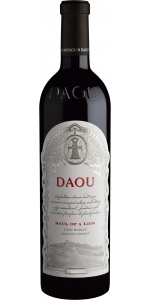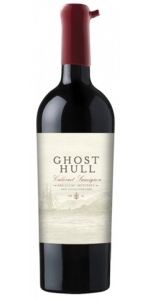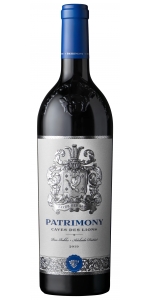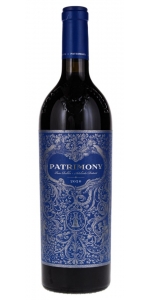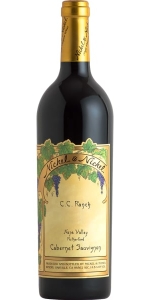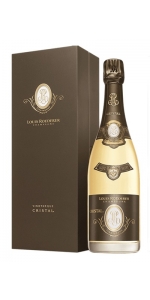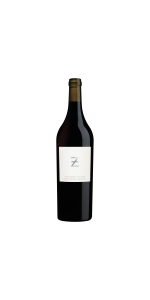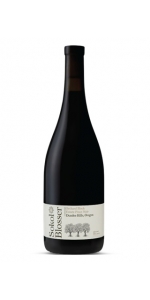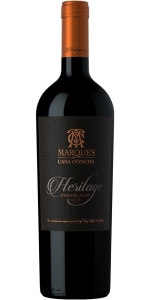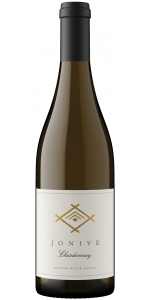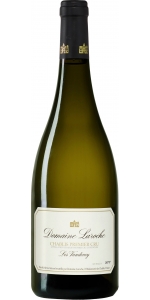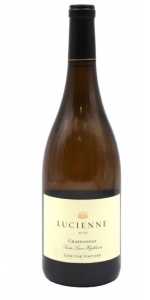New Products
Charles Heidsieck Vintage Brut is made from 57% Pinot Noir, 43% Chardonnay.
A beautiful golden robe offers glints of green accentuated by a delicate, dynamic effervescence. The initial nose introduces intense toasted and smoky notes along with ripe fruit. When swirled in the glass, the nose takes on a heartier dimension with touches of apricot and vineyard peaches. The aromatic concentration, due to a heat wave of several weeks, is reminiscent of the summer sun. The attack is taut and decisive. the creamy texture, the crisp fruitiness and spiced notes of cinnamon, licorice and pepper are the hallmark of the House style.
Review:
Aged for eight years on the lees before disgorgement, the Champagne is deliciously toasty with acidity and fine dryness.
-Wine Enthusiast 96 Points
Disgorged in January of 2023, the 2013 Champagne Millésime Brut was the last vintage from the cellar master for Heidsieck prior to Cyril Brun. The 2013 Champagne Millésime Brut is a bright straw yellow color and is based on the crus of Les Mesnil, Avize, Averney, and Aÿ. It’s fresh with aromas of wet stones, fresh quince, and fresh jasmine flowers. It has a chalky and focused texture, with ripeness to balance it out, and a long, graceful finish. At this stage, it feels more forward with 57% Pinot Noir and the rest Chardonnay. A more mineral-tinged expression, it has a lot of charm and the promise of longevity over the coming two decades. Drink 2024-2044. It will be interesting to see how the Pinot shows itself over time. 8 grams per liter dosage.
-Jeb Dunnuck 95 Points
M. Chapoutier Hermitage Monier de la Sizeranne is made from 100 percent Shiraz.
In Hermitage, Syrah achieves its noblest expression and La Sizeranne has become a benchmark wine for the region. M. Chapoutier's roots in the Rhône date back to 1808, when the family first settled in Tain l'Hermitage. The family purchased a winery owned by Comte Monier de la Sizeranne and over time, acquired a number of excellent vineyards, including some of the oldest in France. M. Chapoutier was the first winery to put Braille on a wine label in 1996. Maurice Monier de la Sizeranne was the owner of the plot of the Hermitage, la Sizeranne until he was blinded in a hunting accident and unable to take care of the land, choosing instead to sell to the Chapoutier family. Following his accident, Maurice became the inventor of the first version of abbreviated Braille, and Chapoutier included Braille on the wine labels as a tribute to his work.
he grapes ferment in open wooden vats after total destemming. Two daily treadings ensure a good extraction of the tannins. Maturation takes place in oak casks, of which one third is new. Several rackings permit a slow and natural clarification process. The wine is unfiltered and unfined.
Review:
I was blown away by the 2019 Hermitage Monier De La Sizeranne, and if there’s a best buy out there in 2019 Hermitage, this might be it. Blackberries, black raspberries, spice box, new leather, and bouquet garni all dominate the bouquet, and it’s full-bodied, with a round, layered mouthfeel, beautiful tannins, and a rare mix of richness and elegance. It’s a stunning wine that’s guaranteed to put a smile on your face over the coming 2+ decades. Hats off to the team at Chapoutier!
-Jeb Dunnuck 97 Points
The Peumo Vineyard is located 170 m above sea level and extended along the Cachapoal River, on terraces of hills of the Coastal Mountains. The vines come from pre-phylloxera cuttings and are trellised to vertical shoot position and cordon pruned. The soils are deep with an upper layer of clay that retains moisture, which controls the vines’ vigor and growth and allows them to remain active through late May, when the Carmenere is picked.
Deep, dark red with hints of violet. Elegant and mineral on the nose, with notes of blackberry and a touch of blackcurrant. It fills the palate with underlying mature tannins. Deep, concentrated, with a long aftertaste and distinctive hints of the Peumo terroir. This 2018 vintage is characterized by its elegance and freshness; it is a wine with a lot of Carmenere character. Pairs best with elegant but simply prepared dishes such as juicy, rare roast beef, veal, pork tenderloin with roasted beets and cranberries, duck (con t or magret). Also delightful with squash-stuffed pasta with morel mushrooms or aged goat cheese with figs.
Review:
The 2018 Carménère Carmín de Peumo is made with grapes from 35-year-old vines and painstakingly overseen by Marcio Ramírez, who adds dabs of Cabernet Franc and Cabernet Sauvignon before aging the wine for 15 months in French oak to achieve a new level of complexity. Deep purple in color. The nose offers black tea and cedar aromas combined with blueberry, black currant and white pepper. With juicy, fine-grained tannins, in the mouth it is fleshy and full-flavored, conveying a surprisingly light feel. Sets a high benchmark for Chilean Carménère/.
-Vinous 94 Points
DAOU Vineyards Soul of a Lion is made from 80% Cabernet Sauvignon, 13% Cabernet Franc, 7% Petit Verdot .
The 2020 vintage presents an alluring profusion of black cherry, mulberry and Oregon blackberry aromas with notes of leather, cigar box and dark chocolate. Hints of desert sage and crème de menthe accent the rich fruit. The palate is silky and voluptuous, delivering loads of currant, cassis, black raspberry and ripe cherry. Notes of fig and baking spice are underscored by earthy tones of dates and truffle. Mature, ripe tannins yield a weighty, velvety texture integrated with a limestone minerality and subtle oak. A lengthy finish leaves lingering impressions of blackberry, plum and espresso with a touch of white pepper. A wine of immense staying power that will evolve favorably for many years to come.
Review:
Impressively dark in the glass, this bottling pairs intense purple fruit and flower on this nose with more roasted, umami-laden aromas. The elegant palate is a master class in tannin management, proving firm in structure yet soft in mouthfeel. Flavors of blackberry jam, cocoa, walnut and cracked pepper ride a lingering acidity into the finish.
-Wine Enthusiast 97 Points
Ghost Hull Cabernet Sauvignon is made of 100 percent Cabernet Sauvignon.
Aromas of blackberry, elderberry and ripe plum are accentuated by notes of mocha, fresh tarragon, vanilla and oak. The palate is full-bodied and offers a lovely balance of acidity and tannins accompanied by rich flavors of dark fruit and black currant, ending with a juicy and lingering finish
Patrimony Caves des Lions is made from 65% Cabernet Sauvignon, 35% Cabernet Franc.
With an inky ruby color, the 2020 Caves des Lions offers elegant aromas of chocolate-covered espresso beans with nuanced layers of blueberries, savory notes of charcuterie, pipe tobacco, and woodsmoke. This festival of flavors continues on the palate with notes of fresh fruit, cayenne pepper, plum jam, and pomegranate. The bold tannins seamlessly balance the fresh and rounded acidity leading to an unwavering finish. This full-bodied and flawlessly intricate wine will surprise you now with its elegance, and later with its longevity.
Reviews:
"Inviting aromas of black and blue fruits with violets, cedar, crushed stones and graphite. A little minty, too. The impressive, compact tannin structure gives depth to the wine, so fine and polished with some chalky texture to it. Stony minerality. Power and delicacy, simultaneously. 65% cabernet sauvignon and 35% cabernet franc. Really long and precise."
-James Suckling 97 Points
Hall Wines The Kathryn Hall Cabernet Sauvignon is made from 96% Cabernet, 4% Merlot.
The 2017 Kathryn Hall is deep, dark ruby in color and elegantly balanced with layered aromas of concentrated blackberry, freshly turned earth, and a hint of warm, spicy oak. The palate is fruit-forward with underlying notes of rich cocoa and leather. Layers of black fruit, nutmeg, cassis and brooding earthy notes are abundant. Supple, seamless tannin abounds, and the wine finishes with an incredible dark fruit feed-back that lasts several minutes.
Review:
The 2019 Cabernet Sauvignon Kathryn Hall is a blend of 95% Cabernet Sauvignon and 5% Merlot, brought up mostly in new barrels. It’s a killer bottle of wine offering lots of ripe black fruits intermixed with savory herbs, melted chocolate, and tobacco. Medium to full-bodied on the palate, it shows the lush, round, velvety style of the 2019 vintage and is already impossible to resist. It’s going to evolve for 15+ years if well stored.
-Jeb Dunnuck 95 Points
Deep ruby in color, this wine boasts aromas of cassis, blueberry, pomegranate, and currants. Notes of tobacco, chocolate, and toasted spices follow, bringing an immense depth to this wine. The palate is full-bodied and rich with ideal balance between concentrated fruit and freshness. From its mouthwatering acidity and flawlessly integrated oak, it finishes with notes of blackberry jam, cacao, and mocha complemented with herbaceous tones of fennel and thyme.
Review:
The 2020 Cabernet Sauvignon is cut from the same cloth as the 2019, yet is perhaps richer and more expansive, with slightly less elegance. Currants, chocolate, toasted spices, and tobacco all define this beauty, and it has full-bodied richness, flawlessly integrated oak, good acidity, and a great finish. Anyone doubting the quality that can be achieved in Cabernet Sauvignon from Paso Robles owes it to themselves to try one of these wines.
-Jeb Dunnuck 97-99 Points
Nickel & Nickel C.C. Ranch Cabernet Sauvignon is made from 100 percent Cabernet Sauvignon.
VINEYARD DESCRIPTION C.C. Ranch is planted in Rutherford, along the slope of a knoll west of the Silverado Trail. The vineyard grows classic Rutherford Cabernet Sauvignon on well-drained, gravelly loam soil and receives a variety of exposures, depending on the block and location. The vines are well balanced and the canopy is opened up to give good light exposure. Nickel & Nickel produces wine from 15 select acres of this 115-acre vineyard.
HARVEST NOTES The beginning of the 2022 growing season was exceptionally mild, with budbreak kicking off in March. By May, the vines began to demonstrate strong shoot growth and average crop yields ahead of veraison in mid-July. While we welcomed a few heat spikes during the summer months, our proactive approach to vineyard management allowed us to not be negatively impacted and we maintained great quality through heat mitigation preparation, including the use of shade cloths and misting systems, among others. Mild to moderate temps in August created optimal conditions allowing for bright and focused flavors.
SENSORY EVALUATION The 2022 C.C. Ranch Cabernet Sauvignon offers a pure expression of Rutherford, pushing the edge of ripeness while retaining a juicy vibrancy. Concentrated red raspberry and cherry flavors blend beautifully with subtle notes of clove, baking spice, and the signature Rutherford dust. The oak harmonizes with the fruit, adding depth, while vibrant acidity and silky tannins create a layered mouthfeel.
The C.C. Ranch exudes finesse from the very first swirl with lifted plum and floral aromatics opening onto a beautifully plush palate. Ripe raspberry and plum flavors are underscored by seductive spicy notes, with soft tannins gently supporting the wine from entry to completion. With fruit that grows brighter and fresher as the wine progresses to the finish, this Rutherford Cabernet is incredibly approachable now but will continue to age gracefully over time. A finish that lingers well after the last sip.
Niner Cabernet Sauvignon is made from 91% Cabernet Sauvignon, 3% Cabernet Franc, 3% Petit Verdot, 3% Malbec.
2021 was a benchmark vintage for Cabernet in Paso Robles. The long, cool growing season was ideal for our Bordeaux grapes and allowed them to slowly ripen, creating complex flavors and wines built to age. The 2021 Cabernet Sauvignon was aged 21 months in French Oak barrels and is one that you’ll want for your collection. It is an elegant wine with a balance of dark fruit flavors and herbaceous notes with lush tannins.
Review:
92 points, Editor's Choice - Wine Enthusiast
Louis Roederer Cristal Vinotheque Edition Brut Millesime 1997 is made from Pinot noir (62%) and Chardonnay (38%).
Color
A bright and shimmering golden color, animated by an ultra-fine and swirling effervescence.
Nose
The bouquet is pure, precise and complex, mixing aromas of white flowers, almond, honey and nougat. Upon aeration, notes of red fruits and smoke are revealed, followed by warm and caramelized nuances reminiscent of macaroon, baked apples and tarte tatin.
Palate
Indulgent and velvety, the palate is rich while maintaining a great freshness thanks to a delicate effervescence. The flavors of candied Corsican citron stretch out on a finish marked by a chalky, powdery and iodized freshness, offering a dense texture and a serene length.
The property
Founded in 1776 in Reims, the Louis Roederer Champagne House has remained family-owned and independent. After more than 200 years of existence, the Louis Roederer House is still in the hands of the same family. Today led by Frédéric Rouzaud, who represents the seventh generation of the lineage, the Louis Roederer House embodies the excellence of Champagne wines around the world thanks to cuvées crafted like a work of art.
The vineyard
With nearly 241 hectares of vines, the Louis Roederer House draws its strength from its extraordinary vineyard, composed only of Grands and Premiers Crus in the Marne Valley, the Montagne de Reims and the Côte des Blancs. A true mosaic of terroirs, the Louis Roederer House's vineyard is divided into 410 plots that reflect all the diversity of the Champagne soils.
The wine
Cristal Vinothèque 1997 is made from three great vineyards known as "La Rivière", "La Montagne" and "La Côte".
The vintage
The spring of 1997, mild at first, was marked by an early bud break followed by severe frosts in April that damaged the vineyards of Verzenay and Verzy. After an early flowering in June, the rainy and cold weather until August favored the development of mildew and rot. Fortunately, the return of warm and sunny weather in August and September saved the vintage, with harvests taking place under radiant sunshine from September 15 to October 1.
Vinification and aging
Vinification is carried out in wood to the extent of 6%. Malolactic fermentation (16%). The cuvée was aged for 15 years on lees, 5 years on points and benefited from a rest of 4 years after disgorging. The dosage of this 1997 vintage champagne is 8 g/liter.
Review:
Intense nose of preserved lemons, salted yellow plums, walnuts, toast, salted caramel, roasted chestnuts and dried pineapple. Beautiful and complex, from 15 years, 5 years en pointe, before disgorgement in 2018. Delicious, salty toffee character. Soft, silky bubbles. Long and powerful. Thought-provoking. Unique. Will be launched in September 2022. Drink on release or hold.
-James Suckling 99 Points
A slope (un talud) leading up to a mountain where centuries of rock falls have left the soil beneath full of large angular rocks, and therefore useless for most agriculture. Deposited hugger-mugger amongst the clay and sand however, they offer perfect drainage and allow vines to grow, forcing their roots ever downwards in search of water, picking up minerals along the way. If you wanted to explain to someone what Cabernet Sauvignon tasted like, you could do a lot worse than showing them this beautiful expression of the variety which demonstrates great purity, concentration and elegance.
Review:
Talud is from the oldest cabernet sauvignon vineyards on Tabalí’s estate in the coastal Maipo zone, 50 kilometers from the Pacific, planted in 1999. The soils are colluvial, which often deliver firm, pointed tannins, and those are present here, but they’re very nicely accompanied by juicy red fruit and bright acidity that allows this wine to put its fresh, vibrant facet in the foreground. Take note, however, there are deep, dense flavors here. It’s still a very young cabernet, so make room in the cellar.
-Patricio Tapia - Descorchados 95 Points
Ziata Meteor Vineyard Cabernet Sauvignon is made from 100 percent Cabernet Sauvignon.
Bold and intense, this Cabernet Sauvignon from the Meteor Vineyard in Coombsville is full-bodied and berry-driven, with rich spice undertones and a firm structure.
After 20 years of marketing Napa Valley and its wines, Karen Cakebread launched her own project in 2008 with two major goals in mind: to create beautifully structured wines that reflect the vineyards from which they come, and to be involved in every aspect of making the wines.Karen started ZIATA, named in honor of her mother, Mary Annunziata, in 2008 with three varietals: Cabernet Franc, Sauvignon Blanc and Pinot Noir, which she chose for their food-friendly qualities. She hired Anne Vawter, a protégée of Heidi Barrett, as winemaker and sourced grapes from sustainable sources, working closely with the grape growers through the growing season, knowing that efforts made in the vineyard would create better wine than those manipulated in the cellar. Jennifer Williams : I find winemaking to be both an art and a trade—you learn by doing and working the vineyards, ensuring the fruit is the best it can be long before it’s picked is at least half the work of the winemaker.
Sokol Blosser 'Orchard Block' Pinot Noir 2021 is made from 100 percent Pinot Noir.
VINTAGE HIGHLIGHTS
2021 was the 2nd warmest growing season we have ever seen since 2015. We also got to add a new term to the dictionary: "Heat Dome". Three straight days of triple digit temperatures in late June breaking heat records for the Willamette Valley. Bud break started like usual in the middle of April. We had the driest March through May that the Willamette Valley has seen through 128 years of record keeping! Bloom also appeared on time in early/mid June. While late June brought the “Heat Dome”, our grapes made it through thanks to bloom being finished at all our sites and there still being soil moisture, so they grew like crazy over those three days of hellish temperatures. While July and August turned out to be exceedingly hot and dry, September arrived with little rain which that allowed us to fully ripen the grapes. The hot and dry summer made for fruit that was extremely clean, resulting in excellent fermentations. All in all, mother nature gave us something to be grateful for on our 50th anniversary.
WINEMAKING
The grapes were carefully hand harvested from the Orchard Block (on our Estate vineyard) on September 25th. The fruit was hand sorted to remove any flawed bunches and de-stemmed, half went directly into 3-ton stainless steel fermenters and the other half went in to oak upright fermenters. Fermentation took place over 10-14 days using ambient yeast with punchdowns for cap management. After the long, cool fermentation, the wine was pressed off at dryness and then barrel aged for 16 months in 100% French oak barrels with 17% new oak.
WINE PROFILE
Our 2021 Orchard Block Estate Pinot Noir has bright notes of red cherry, red currant, and a touch of nutmeg on the nose. On the palate, the fruit continues with red cherry, raspberry, and red currants followed by a subtle hint of clove. This is a delicate Pinot Noir with bright acidity with a medium finish.
PAIRINGS
Orchard Block Pinot Noir pairs with a classic roasted turkey, creamy cacio e pepe, and the Oregon favorite, wild mushroom risotto.
Review:
Powerful floral aromatics as violets introduce deep blue fruits, forest floor, and a note of iodine. This old 2.5ha plum and cherry orchard produces wines of depth, elegance and restrained power. The palate is lushly fruited with ripe red raspberries, clove and turned earth. The finish is elegant and long-lived.
Decanter 93 Points
Torbreck Runrig Shiraz - Viognier is made from 98% Shiraz, 2% Viognier.
RunRig often draws comparison with the beautifully fragrant and tautly structured wines from the steep slopes of the Northern Rhône Valley’s Appellation of Côte Rôtie. Shiraz from old dry grown Barossa vineyards is blended with Viognier, complementing the strengths and complexities of these individual parcels of fruit, whilst giving the resulting wine a further dimension.
The Highland clans used a ‘RunRig’ system to distribute land amongst their clansmen in a series of widely dispersed holdings. The emphasis was not on any one farm but rather the communal element of the whole. Shiraz from old dry grown vineyards is blended with Viognier, complementing the strengths and complexities of these individual parcels of fruit, whilst giving the resulting wine a further dimension.
Review:
Tasting the RunRig beside the Descendant is always a wise move, in order to gain some contextual understanding of how they are similar and, perhaps more importantly, how they differ. This 2020 RunRig was sourced from six different vineyards across Barossa (in Lyndoch, Rowland Flat, Moppa, Ebenezer, Light Pass and Greenock) and includes a 2% “dosage” (as winemaker Ian Hongell described it) of Viognier. Matured for 30 months in a combination of new French oak (50%) and second and third fill barrels, the wine rests on its lees for that time. The lower percentage of Viognier here is a seductive and effective thing, adding just enough slick and polish to make this the sybaritic wine that it is, but little enough to allow the grunt, grit and muscle of the Shiraz from all those glorious locations to shine through. Despite the very long time in oak, the wine is balanced and excellent, big in almost every possible way but with an undeniable sense of class and length of flavor. Executed with detail and precision, this wine is clearly defined in its expression of house style
-Wine Advocate 97+ Points
Review:
Lastly, and a wine that will be a candidate for perfection in 4-5 years, the 2019 Châteauneuf Du Pape Centenaire reveals a deep ruby/purple hue as well as extraordinary notes of black cherries, licorice, iron, nori, and peppery garrigue. As with the base 2019, the estate did an incredible job with the tannins, and this wine is flawlessly balanced, with ultra-fine tannins, no hard edges, and the sheer class to evolve for 25+ years. This is a perfect example of power with no sensation of weight or heaviness. The blend in 2019 is 84% Grenache, 10% Mourvèdre, and 6% Syrah, and it wasn’t destemmed and was brought up mostly in concrete tanks, with just 6% in very old barrels.
-Jeb Dunnuck 98 Points
Marques de Casa Concha Heritage is made from 84% Cabernet Sauvignon, 12% Cabernet Franc, & 4% Petit Verdot.
Deep, dark red in color with lush flavors of cherries, blackcurrants, blackberries, cedar, and a bit of black tar. It shows a tremendous concentration of flavors and a smooth, almost silky texture framed by a firm tannic structure that truly stands out at the beginning of the long finish.
This wine pairs beautifully with grilled, roasted, or braised red meats and game in sauces that have a bit of acidity, with tomato or wine or with herbs such as rosemary, thyme, and bay leaf. A perfect wine for most cheeses.
100% estate grown red blend from renowned Puente Alto terroir. Chile’s most acclaimed DO. Upon arriving at the winery, the grapes are destemmed and crushed for fermentation, which takes place in closed stainless steel tanks with daily pump overs throughout the entire 10-day process. The new wine remains in contact with its skins for approximately 10 days, when it is devatted and malolactic fermentation is allowed to take place naturally.
The wine then underwent 16 months in French oak barrels, 40% first use, 60% second use.
El Mariscal vineyard is 600 meters above sea level and is made up of 52.95 hectares, of which 46.23 correspond to Cabernet Sauvignon, 4.52 to Cabernet Franc and 2.20 to Petit Verdot; and it has a density of 5,500 plants/ha, vines that come from mass selection and are mostly on loam. Meanwhile, Don Melchor vineyard is 650 meters above sea level and is made up of 125.96 hectares, of which 112.67 correspond to Cabernet Sauvignon, 1.28 to Cabernet Franc, 2.45% to Merlot, 1.28 to Petit Verdot and 8.28 to ground in rotation. It has a density of 2,000 to 4,000 plants/ha, and the new one (20%), planted between 2004 and 2017 and with a density of 8,000 plants/ha. The vines come from pre-phylloxera mass selection and are on loam. The vineyards are located in the Puente Alto denomination of origin, on the northern bank of the Maipo River, specifically on the river’s third alluvial terrace, which is one of the oldest and that instills great character and elegance to the wines that come from there. The soils are of alluvial origin, rocky, poor in nutrients, and highly permeable due to the amount of gravel in the subsoil, which enables excellent drainage. The climate is semi-arid Mediterranean with a strong influence of the Andes Mountains. This is the coldest part of the Maipo Valley. Its pronounced daily temperature oscillation of approximately 18ºC extends the grape ripening process, concentrating and intensifying its aromas.
Review:
Black pepper and cherry give way to hints of chocolate after some aeration in the glass. The same notes show on the palate and blend with bell pepper. This red comes from the alluvial soils in the D.O. Puente Alto and is full bodied, with a firm structure. Moderate acidity is enough to freshen up the finish.
-Wine Enthusiast 92 Points
Jonive Chardonnay Russian River Valley is made from 100 percent Chardonnay.
2021 Jonive Russian River Estate Chardonnay: Harvested the night of September 20th with the two clones kept separate. The clone 95 was pressed into tank where it was chilled, settled and racked, then allowed to ferment naturally for 12 days when it then went to barrel. The primary and secondary fermentations lasted in barrel until April 20th, some seven months. The wine remained on its original lees until just prior to bottling. The clone 17/Robert Young chardonnay was pressed into tank and allowed to brown naturally before a natural fermentation occurred. This lasted for 15 days before going to barrel where it finished the last 12 days of primary fermentation and six weeks of secondary fermentation and it too rested on its original lees until just prior to bottling.
The wine has a typical straw color and complex aromas of lemongrass, nutmeg, Meyer lemon and a touch of passionfruit. It has an enveloping mouthfeel that is at once tart and linear as well as rich and expansive, a very unusual and beguiling combination of textures and mouthfeel. The browning of the clone 17 enables the wine to be rich, but at a lower alcohol (13.3%) and the clone 95 contributes beautifully fresh acidity. The pallet shows jasmine, honeydew melon, tarragon and lemongrass with a nice kiss of high-quality French oak. The extended lees contact gives the wine amazing length, energy and vitality.
353 cases produced
Harvested September 20th
14-month barrel aging in 67% new French oak barrels, 20% once used and 13% neutral
61% clone 17/Robert Young and 39% clone 95
13.3% alcohol
Bottled December 14th
Reviews:
A wildly elegant aromatic profile announces this Chardonnay from Jonive's estate vineyards, a combination of two separately fermented clones, 95 and clone 17, also known as Robert Young. The blend is beautiful and effusively aromatic. Lemon cream and white flowers mark the aromatic profile, and the palate, crafted with plenty of lees contact, shows a creamy texture of lemon and orange oils. Savoury notes of sorrel and lemongrass mark the lengthy finish. The new French oak kisses this wine just a touch with a note of Madagascar vanilla on the finish.
-Decanter 94 Points
This seamless, smooth and mouthfilling wine is packed with ripe fruit flavors and deftly accented with oak notes like vanilla, hazelnut and toast. It's rich in texture yet relatively light in body, encouraging flavors that mingle with a subtlety that asks for more sipping.
-Wine Enthusiast 94 Points
Flowers Sea View Ridge Estate Pinot Noir is made from 100 percent Pinot Noir.
Pungent, coastal aromas pin the source of this Pinot Noir — high elevation ridges juxtaposed to the mossy, rocky shoreline of the Pacific Ocean. Bright, salty notes on the nose conjure a fresh sea breeze, while cool loam and the scent of wild botanicals embody the evergreen forest nearby. Red cherry and vivid wild strawberry pop on a singularly expressive palate, filling the mouth with firm but fine textures. A distinct vein of iron-rich minerality unspools under intriguing layers of orange peel and bergamot tea, all coming together in a vibrant, lingering finish.
Review:
What an amazing nose of grilled dried seaweed, oyster shell, dried strawberry and iron. Full to medium body with linear tannins that give it drive and length. Iron shavings. Tight at the end. Superb. Drink after 2025.
-James Suckling 97 Points
2020 VINTAGE: The harvest 2020 in Vaudevey started on September 1st. The harvest yields were impacted by drought, particularly for the certain plots that were well exposed to the sun. The ripening of the grapes was slow, which helped aromas to concentrate and acidity to be kept.
GRAPE VARIETY: 100% Chardonnay
VINEYARD: Domaine Laroche is one of only three proprietors in Premier Cru Les Vaudevey, owning 24.61 acres of the 102.13 acres premier cru vineyard. Planted on steep slopes of 30-50% at 640 to 771 feet with an eastern to southeastern exposure, the vines enjoy morning to early afternoon sun. The coolest valley of the Domaine Laroche vineyard—always the last one to be harvested.
VINE DENSITY: 5,880 vines per hectare (2,380 vines per acre); massal selection from Laroche old vines for the new plantings VITICULTURE: One man, one plot: There are more than 30 people who are dedicated to caring for the 90-plus hectares (222.39 acres) of Domaine Laroche vineyards, with each person responsible for only one plot. This tailor-made approach allows them to manage the vineyards with precision, speed and accuracy.
PRESSING: The grapes are harvested and sorted by hand. Whole bunches are pressed in a pneumatic press, and then the must settles for 12 hours at 10° C to 12°C (50° F to 54° F) in large vats.
FERMENTATION: The must ferments for 3 weeks, 74% in stainless steel vats and 26% in French oak barrels.
MATURATION: Nine months in 72% stainless steel tank, the rest in barrels. only 5% new oak in total. FILTRATION: Minimal filtration is used to preserve and maximize the natural character of the wine. ALCOHOL: 12% TASTING NOTES: Bright gold in color. Hints of minerality layered with citrus notes of lemon peel. Nervy, racy and lively. You can enjoy it by the glass, with oysters, seafood and smoked salmon. Also, pairs well with Asian food and light cheese.
Hahn Estate Lucienne Chardonnay Lone Oak Vineyard is made from 100 percent Chardonnay.
Reviews:
Lemon blossom, grapefruit rind, pastry flake and a hint of ash show on the nose of this single-vineyard expression from the Hahn family. It's suave and broad on the palate at first, then it chisels down to pinpoint acidity, delivering flavors of apricot, lime zest and chalk before the slightly nutty finish. Matt Kettmann
-Wine Enthusiast 94 Points
- back
Blind Justice Beckstoffer To Kalon Vineyard Cabernet Sauvignon is made from 76% Cabernet Sauvignon and 24% Cabernet Franc.
The dream team does it again. Melka, Koschitzky and Sands have collaborated on a compelling Cabernet. The creamy mouthfeel is almost decadent, but there’s always a balance kept between opulence and energy. Wonderfully expressive in its aromas and flavors, it’s just swimming with dark cherry and plum on a bed of dried flowers and gravel with a hint of mint. Complex and impressive, as always.
The 2019 Cabernet Sauvignon Blind Justice Beckstoffer To Kalon Vineyard is creamy and super-expressive from start to finish. The balance of opulence and ‘energy here makes for an absolutely compelling Cabernet. Dark cherry, plum, tobacco, dried flowers, menthol and gravel lend quite a bit of complexity throughout. Impressive.
~ Antonio Galloni 95 Points
Mason Cellars Pelissa Vineyard Cabernet Sauvignon is made from 100 percent Cabernet Sauvignon.
The 2020 Mason Oakville Cabernet Sauvignon is quintessentially Oakville from nose to finish. Attractive fresh blackberry, red current and chocolate with a hint of sweet oak boast out of the glass. This wine showcases graphite, velvety tannins and concentrated, beautifully balanced flavors with a bit of spice and white pepper. These bold flavors typical of Oakville Cabernet are rounded out with velvety tannins, a weighty mid-palate and a long, juicy finish.
Production Notes:
The fruit was delicately hand-picked in the early morning hours and brought into the winery for processing. The grapes were crushed, about 60% whole berry, and cold soaked for three days before being inoculated for primary and malo-lactic fermentation. Once dry, the wine was put down to barrel for 20 months in medium toast French oak, 25% of which was new.
Vineyard Notes:
Grapes for our 2020 Mason Cabernet Sauvignon are sourced exclusively from the Pelissa Vineyard in Oakville. This vineyard spans 60 acres and is planted to Old BV Clone 7 Cabernet Sauvignon as well as Zinfandel. This vineyard is named for Andrew and Babe Pelissa, who after their marriage on August 30, 1930, made their home at the site of this vineyard which, at the time, was a dairy. Oakville is the core of Napa Valley’s famed Cabernet Sauvignon production, and this site is no exception with the flawless blending of climate and soil to create a remarkable wine.
Review:
“This firmly structured, well-balanced wine has the feel of a classic Bordeaux blend. Just-ripe red and black fruits blend with subtle toast, cedar and mint on a moderately tannic, slightly tangy texture. The wine is tasty enough to decant and drink soon with grilled lamb chops or roast chicken. Best from 2026–2036.” – Jim Gordon
-Wine Enthusiast 94 Points

